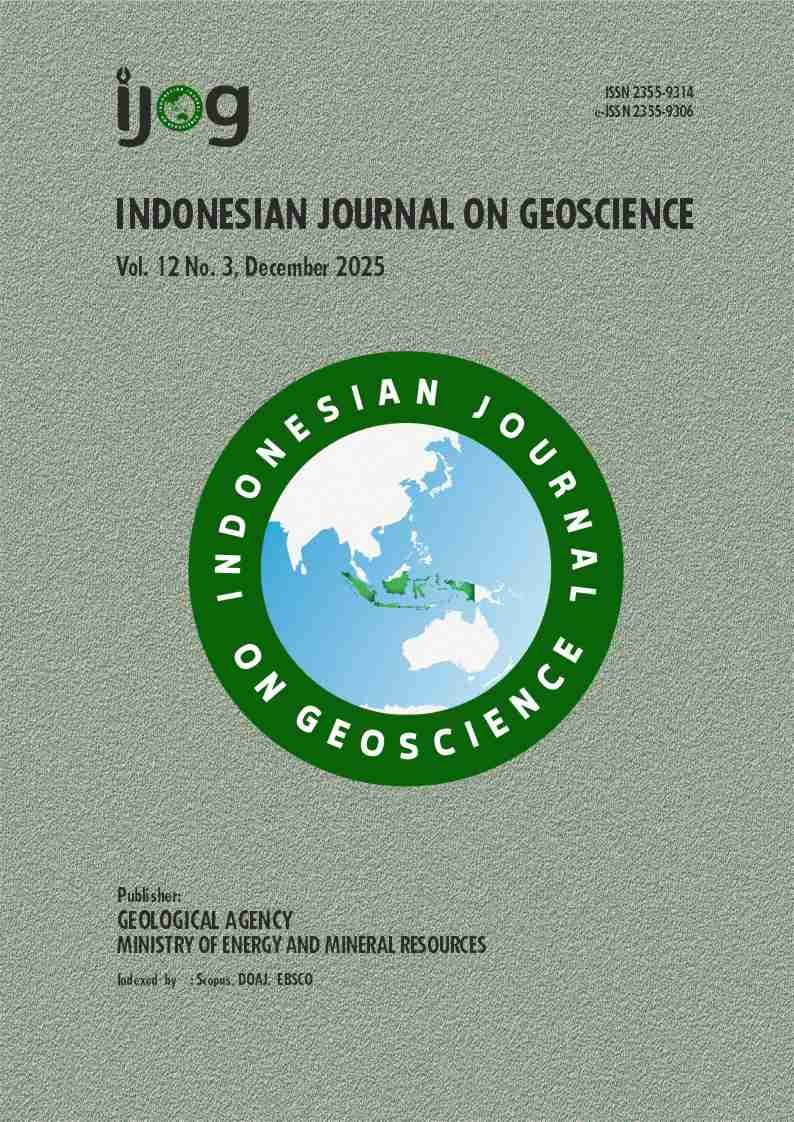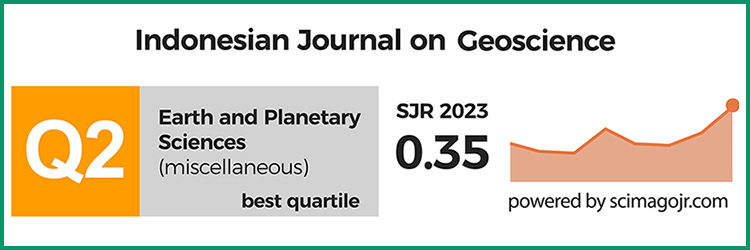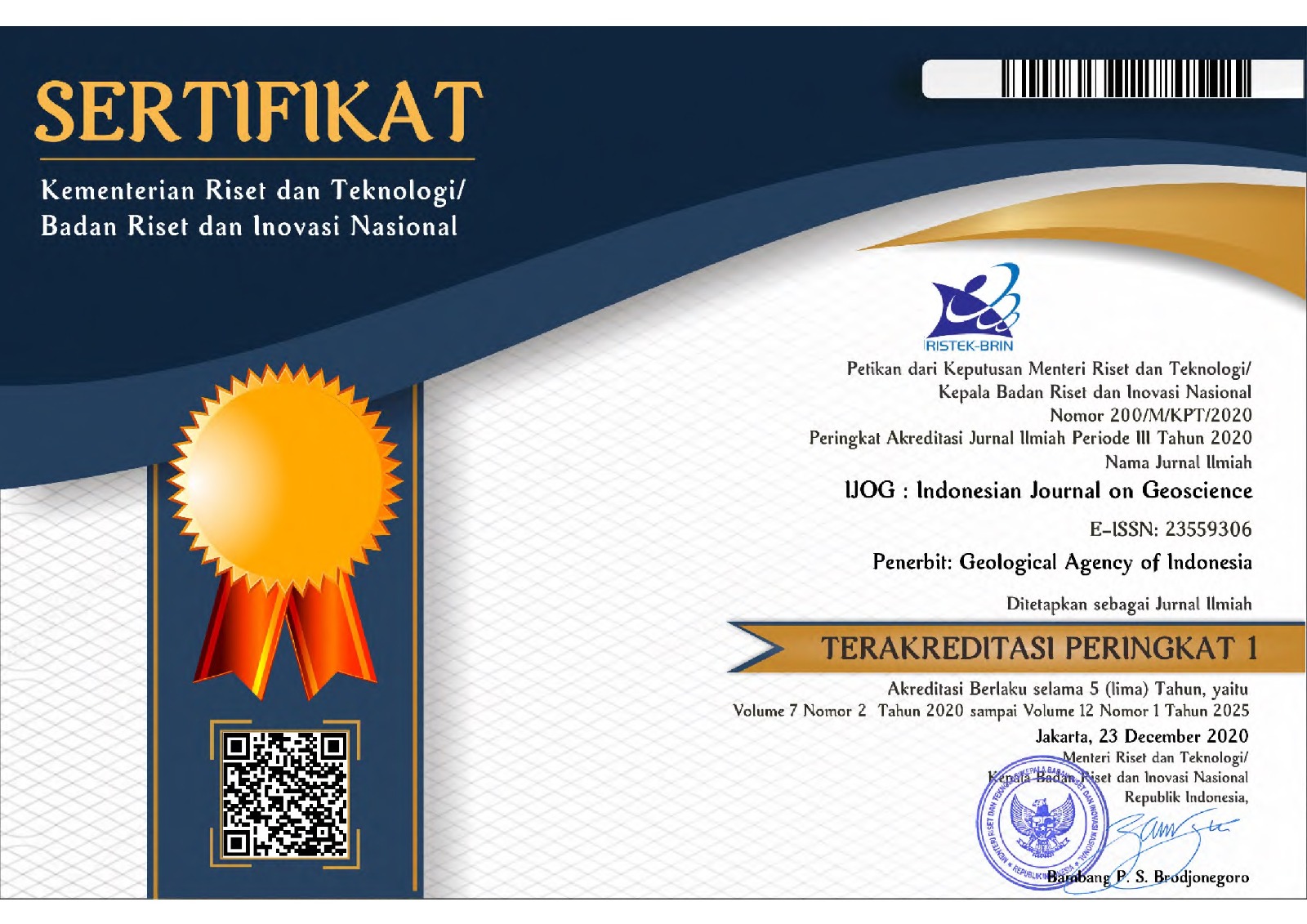Magnetic Basement Depth from Marine Magnetic Data in Cendrawasih Bay Hydrocarbon Prospect Area, Bird Head, Papua, Indonesia
DOI:
https://doi.org/10.17014/ijog.12.3.383-400Abstract
The magnetic basement and structural segmentation of the eastern Bird Head region, Papua, were investigated using marine magnetic data and frequency-domain inversion (MagB_Inv). The studied area includes The Cendrawasih and Yapen–Biak Basins, both were influenced by the Yapen strike-slip fault and transtensional tectonics. Processing involved reducing to the pole, spectral depth estimation, and 3D magnetic inversion to delineate basement geometry, and to infer the sediment thickness. Three structurally bounded subbasins were identified: (1) between Cendrawasih Bay and Num Island, (2) between Cendrawasih Bay and Yapen Island, and (3) between Yapen and Biak Islands. These subbasins exhibit magnetic basement depths ranging from 0.4 to 7 km and sediment thicknesses exceeding 3 km. Magnetic highs around Yapen Island correlate with Miocene volcanic and ultramafic outcrops, interpreted as shallow high-magnetization crustal blocks. The subbasins are bounded by ridges and faults, including the Yapen Fault Zone and fold-thrust systems, which deform both basement and sedimentary cover. The basement morphology controls sediment distribution, and defines fault-bound sedimentary zones, consistent with regional tectonic trends. Seismic cross-sections and shallow earthquake hypocentres, and further supports this structural segmentation. These results provide a structural framework to understand the basin structure, and to support preliminary hydrocarbon evaluations in this underexplored region. Despite these insights, interpretations are constrained by the non-uniqueness of magnetic inversion prosess and the absence of well and high-resolution seismic data.



















